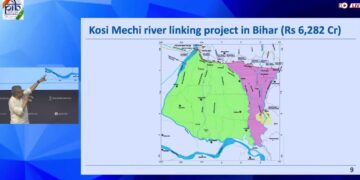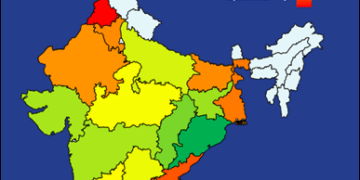The Policy That Strangled a State
The Freight Equalisation Policy (FEP), introduced in 1952 by Prime Minister Jawaharlal Nehru and Finance Minister T.T. Krishnamachari, was not merely an economic misstep—it was an act of systemic marginalisation that stripped Bihar (and present-day Jharkhand) of its mineral wealth while enriching coastal states. Marketed as a tool for “balanced regional growth,” the FEP instead became a weapon of economic plunder, exposing the hypocrisy of Nehruvian socialism and Krishnamachari’s unabashed favouritism towards South India.
Nehru’s Vision: Heavy Industry at Bihar’s Expense
Nehru’s obsession with centralised planning and heavy industry, enshrined in the 1948 Industrial Policy Resolution, prioritised national symbolism over regional equity. Bihar, home to 40% of India’s mineral reserves, was reduced to a sacrificial lamb in this grand experiment. The FEP subsidised freight costs for coal, iron ore, and cement, allowing industries to source these materials at uniform prices nationwide. Nehru’s government claimed this would prevent “geographic lock-in,” but in reality, it exported Bihar’s resources while denying it industrial growth.
Key Architects of Disparity
- Jawaharlal Nehru: Dismissed Bihar’s mineral advantage as a “colonial relic,” insisting industries thrive in coastal metros. His utopian vision ignored ground realities, enabling the looting of Bihar’s resources.
- T.T. Krishnamachari: As Finance Minister, he operationalised the FEP with glaring bias. While southern cement giants like ACC and Madras Cements saved millions on limestone transported from Bihar, the policy offered zero reciprocity to Bihar. Krishnamachari’s Tamil Nadu roots and political calculations likely influenced this skewed implementation.
How the FEP Executed Bihar’s Deindustrialisation
Pre-1952: Bihar as India’s Industrial Powerhouse
- Tata Steel (Jamshedpur, 1907), Indian Aluminium Company (Muri, 1943), and Heavy Engineering Corporation (Ranchi, 1958) anchored Bihar’s economy.
- Between 1951–1961, Bihar’s industrial output surged 75%, outpacing the national average.
Post-FEP Collapse: A State Stripped Bare
- Resource Curse Unleashed: Bihar’s share in national industrial output crashed from 11% to 3%. Industries fled to Maharashtra, Gujarat, and Tamil Nadu, leveraging FEP subsidies and coastal ports.
- Employment Exodus: Over 100,000 jobs vanished as factories like Bokaro Steel (1964) prioritised coastal markets. By 2025, Bihar’s unemployment rate stands at 14.4% (vs. India’s 6.7%), with per capita income ₹43,470—less than a third of the national average.
- Krishnamachari’s Southern Bias: The FEP disproportionately benefited Tamil Nadu and Andhra Pradesh. Cement cartels in the south saved ₹500–700 per tonne on limestone freight from Bihar, while Bihar received no infrastructure or jobs in return.
Resistance Ignored, Grievances Dismissed
Voices from Bihar
- Then Chief Krishna Sinha and Deputy Chief Minister Anugrah Narayan Sinha: Warned Nehru in the 1950s that the FEP would “reduce Bihar to a quarry.” Their protests were dismissed as “parochial.”
- Nitish Kumar: In 1996, as Lok Sabha MP, decried the policy’s “economic violence,” calling it a “deliberate act of impoverishment.”
The South’s Silence
Southern industrialists and politicians, including Krishnamachari’s allies, celebrated the FEP. Tamil Nadu’s cement output tripled between 1952–1970, while Bihar’s factories shuttered.
Central Government’s Token Admissions—Too Little, Too Late
Half-Hearted Apologies
- Pranab Mukherjee (2017): As President, admitted the FEP “impaired Bihar’s growth,” but offered no reparations.
- Nirmala Sitharaman (2024): Blamed Congress-era policies for Bihar’s ruin, yet Modi’s ₹1.25 trillion package (2015) remains largely an unfulfilled promise.
A Legacy of Exploitation
Even after the FEP’s 1993 repeal, Bihar’s industrial share languishes at 12% of GSDP (2025), with 12 million Biharis forced into migrant labour.
“The freight equalisation policy was a dagger plunged into Bihar’s heart. Removing it decades later couldn’t stop the bleeding.” — Former Lok Sabha Speaker Somnath Chatterjee


















